Laura Knight in 5 Paintings: Capturing the Quotidian
An official war artist and the first woman to be made a dame of the British Empire, Laura Knight reached the top of her profession with her...
Natalia Iacobelli 2 January 2025
Folk Art, Surrealist, Visionary, Americana, call it what you will. Minnie Evans’ (1892—1987) dream-like artworks speak of another world, a world which the artist believed God had given her insight to see. The North Carolina native’s oeuvre ranges in size and medium, but take a look at any of Minnie Evans’ artworks and you will quickly notice that there is another-worldly aspect to them, from the colors and symbols to the overall themes of religion and a higher being.
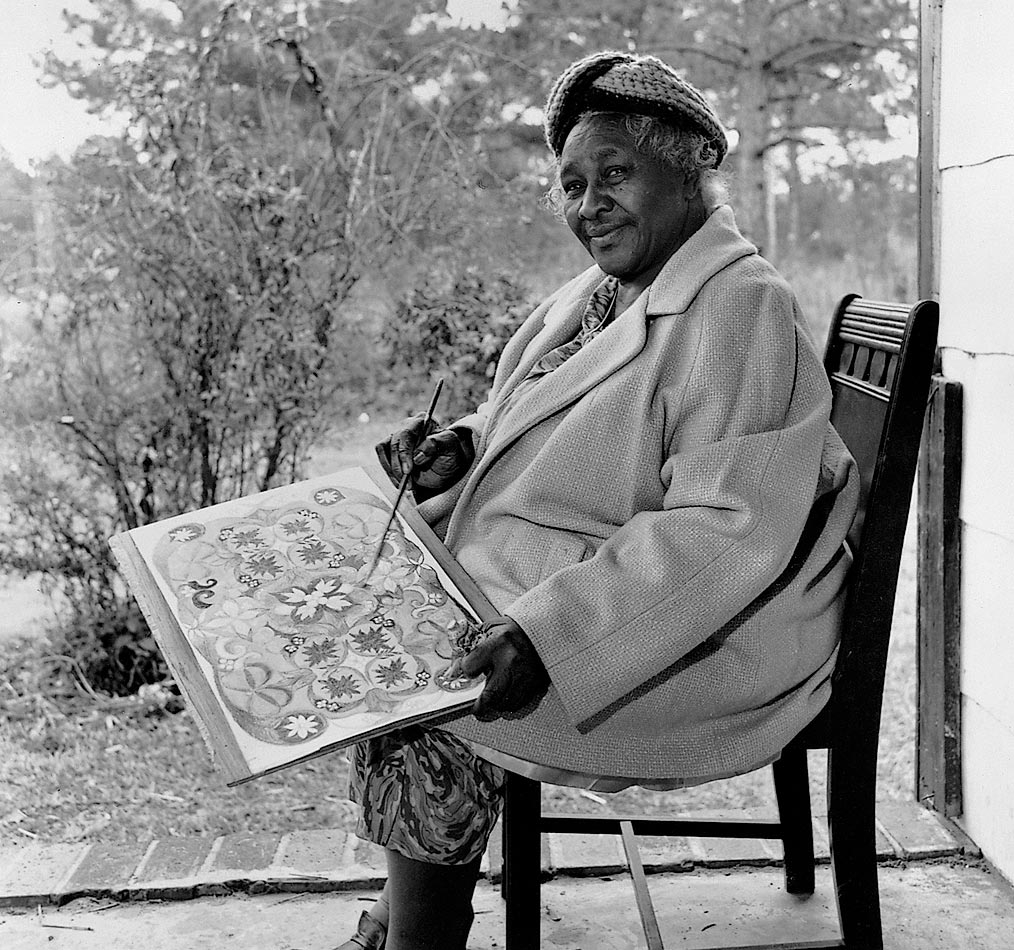
Born outside of Wilmington, North Carolina, towards the end of the 19th century, the visionary artist left school after the 6th grade to help provide for her family. Minnie Evans’ art, has been shown across the US, especially in Wilmington where she has been the center of numerous exhibits and events across the state.
Evans worked as a domestic and gatekeeper for Airlie Estate and later Airlie Gardens in Wilmington, often selling her paintings on the grass next to the park’s gates. Influenced by the lush greenery in the gardens, she stated that “Green is God’s theme color”. Upon further inspection, there is evidence of influence from both African and Western cultures which her ancestors stemmed from.
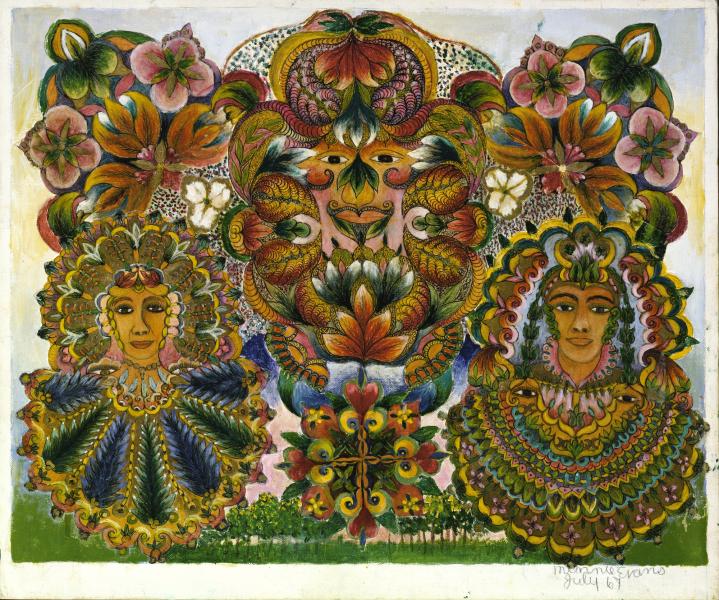
Part of the reason for the excitement which still surrounds her dream-like artworks is the artist’s creative process, hardly even understood by Evans herself.
…It was shown to me what to do…I have to look at them like everybody else. They are just as strange to me as they are to anyone else…
Minnie Evans, Smithsonian American Art Museum.
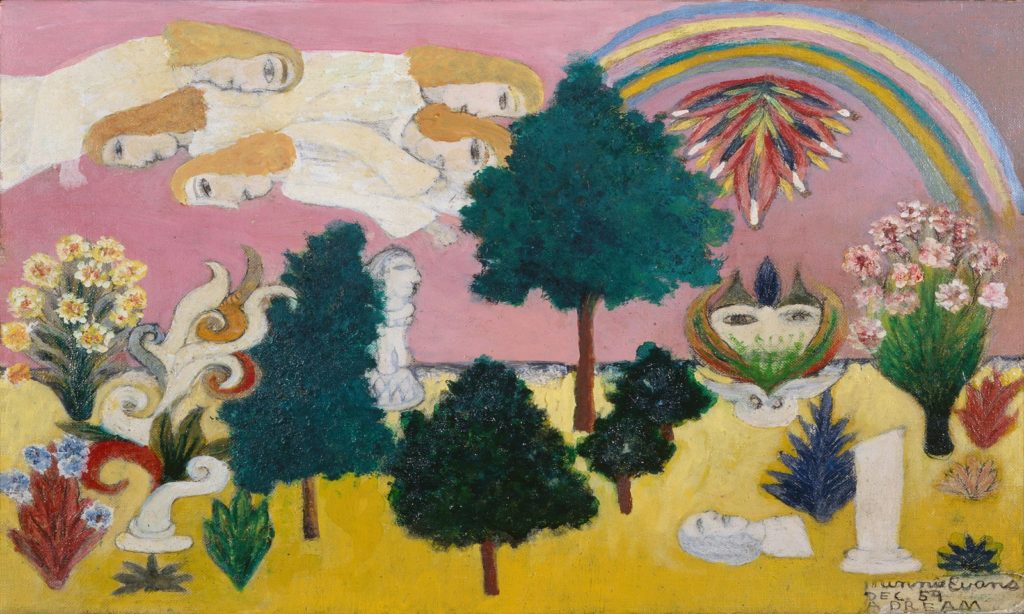





I have no imagination…they just happen.
Minnie Evans quoted by Nina Howell Starr, The Lost World of Minnie Evans, The Bennington Review vol. 111, no. 2 (Summer 1969): 41.
Evans was the subject of a 1983 documentary aptly titled The Angel That Stands by Me. In the documentary, Evans recounts that she was not formally trained in regard to art because no one knew what to teach her:
Now if I had been painting life, studying how to make people’s’ faces, maybe I’d have had a teacher…God has sent me a teacher…an angel that stands by me.
Minnie Evans quoted in documentary The Angel That Stands by Me, 1983, directed by Irving Saraf and Allie Light. Posted by American Visionary Art Museum via YouTube, 2021.
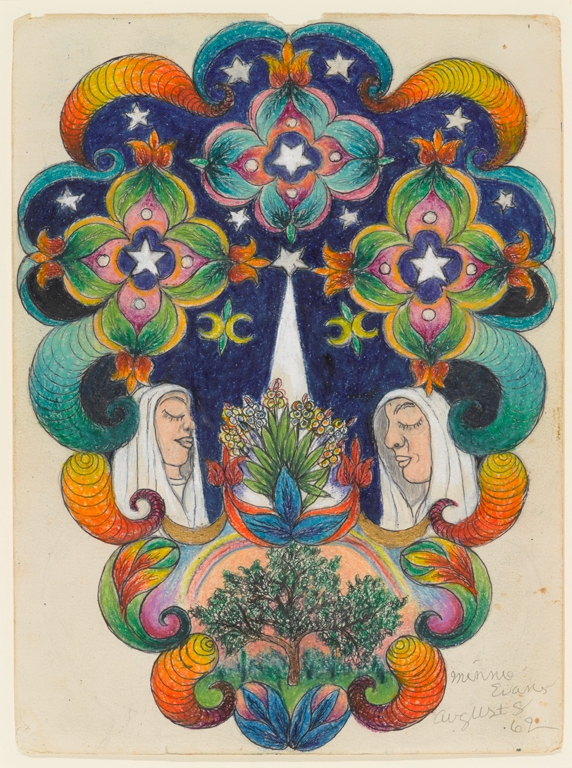





What is surprising to learn is that Evans never really grew used to the voice she heard which directed her to draw or paint. The artist had a story for every painting and drawing, detailing what can only be described as a mystical knowledge of a world outside of our own realm.






The idea of a visionary process is not new. However, Evans’ out-of-body experience is worth discussing in terms of divine inspiration. (It could be said that the Renaissance greats such as Michelangelo and Leonardo received inspiration from the heavens – from a supernatural force outside of their control.)
Her artwork may be deemed primitive or child-like by some, but it is evident that there is something special about the North Carolinian’s artistic style. Even though I am from the same region as the late artist, I still found myself drawn into her mystical world and creative process while researching her work for this piece, as if I was learning about her for the first time.
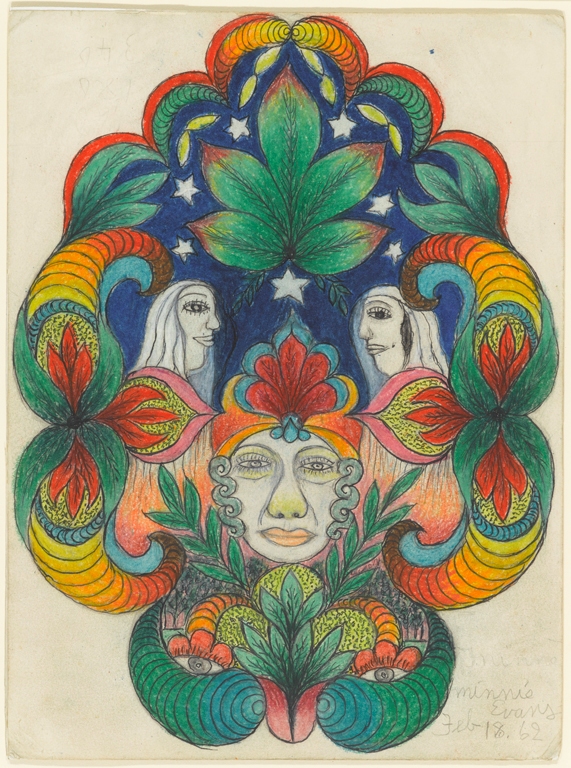





DailyArt Magazine needs your support. Every contribution, however big or small, is very valuable for our future. Thanks to it, we will be able to sustain and grow the Magazine. Thank you for your help!